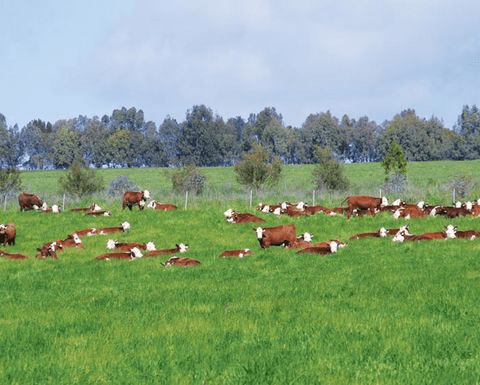Semi-permanent pastures are pastures that are established for a few years to cover the soil and provide feed for livestock. Such pastures are converted into cropping lands after a few years.
When there is a break in the cropping phase, farmers find it difficult to allow the land to remain idle. Therefore, semi-permanent pastures are normally established on such lands to assist farmers to acquire more feed for livestock or receive extra income from the sale of forage.
Definition of Semi-Permanent Pastures? Semi-permanent pastures are areas of land that are cultivated with perennial plants, such as grasses and legumes, and are intended to be used for grazing over an extended period, typically several years. These pastures are like long-term homes for the animals, providing a stable and reliable source of food for grazing over an extended period.
To put it simply, semi-permanent pastures are like comfortable, long-term living spaces for the animals, where they can find food that keeps them healthy and strong for a good while.
Farmers create semi-permanent pastures to ensure that their animals have a consistent and dependable food source throughout the year. These pastures are carefully managed and maintained, with the right balance of plant species that can withstand different weather conditions and provide a well-rounded diet for the grazing animals.
Moreover, these pastures are like a carefully planned buffet, with a variety of plants that not only keep the animals satisfied but also contribute to the overall health of the soil. By having a mix of grasses and legumes, these pastures help improve soil fertility, prevent erosion, and support the growth of healthy plants.
Read Also: Pastures Associated with Field and Tree Crops
Semi-Permanent Pastures

These are pastures that are established as part of the rotation system usually due to a break in the cropping phase. The cropping phase can be broken for several reasons such as drastic decreases in prices of crops, disease outbreaks, low soil fertility, or change in decisions by the farmer.
Therefore, livestock production is integrated into these pastures for a short period of time, usually 5-10years before the pastureland is re-converted into cropping land again.
These pastures also offer a range of environmental benefits, such as promoting biodiversity by providing habitats for various beneficial insects, birds, and other small animals. They help in maintaining the balance of the ecosystem on the farm.
By using semi-permanent pastures, farmers can efficiently manage their land, allowing it to be used for grazing animals over an extended period without the need for frequent replanting or reseeding. This not only saves time and effort but also contributes to the sustainable use of the land.
Furthermore, these pastures can help farmers plan their grazing rotations effectively, ensuring that the land is used in a way that allows for adequate rest and recovery periods for the pasture plants.
This practice helps maintain the long-term productivity and health of the pasture, ensuring that the animals have access to high-quality and nutritious forage throughout the grazing season.
In essence, semi-permanent pastures are like a well-planned and comfortable living space for the animals, carefully designed to provide them with a consistent, diverse, and nutritious diet, while also contributing to the overall health and sustainability of the farm environment.
Read Also: Types of Pastures Based on Duration
Establishment of Semi-Permanent Pastures
Semi-permanent pastures are established on fertile soils that are not waterlogged and undulating. The site should be well prepared following recommended agronomic procedures.
Leguminous forages should carefully follow plots that were previously planted with cereal crops such as Mucuna pruriens and vice versa.
Advantages and Disadvantages of Establishing Semi-Permanent Pastures
Establishing semi-permanent pastures has the following advantages:
The farmer has the liberty to revert back to crop cultivation any time he/she desires;
The soil is adequately protected from direct heating by sunlight;
The soil organisms are properly conserved thereby improving the soil health.
The income level of farmers increases through sales of forage or other crops.
However, the following disadvantages affect the establishment of these pastures:
Sometimes these pastures may serve as potential sources of pests on the farm;
Some may be difficult to eradicate using local implements such as hoes;
They may not be established well, especially when poorly managed due to competition with other crops.
In summary, semi-permanent pastures serve as reliable feeding grounds for animals over several years. They are carefully designed to provide a diverse and nutritious diet for the animals while also ensuring the long-term health and productivity of the land.
